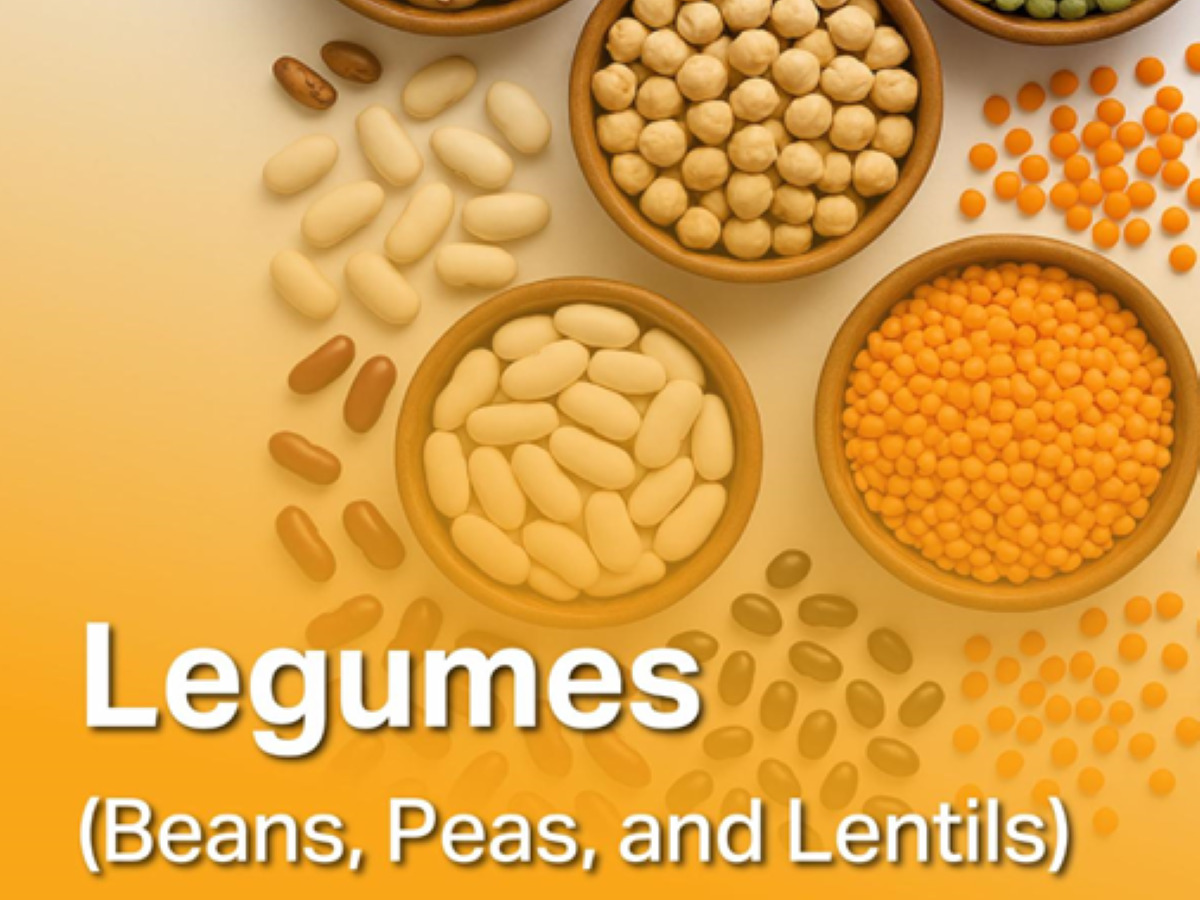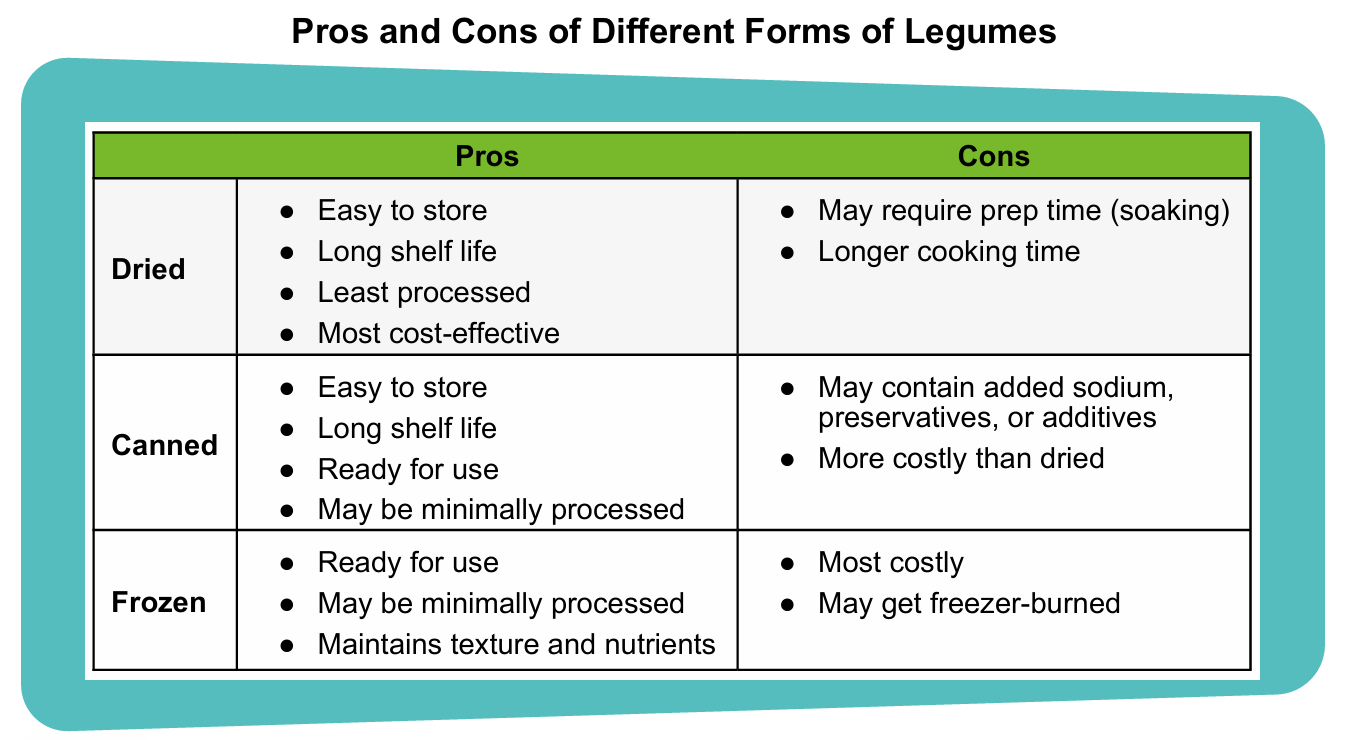Legumes: Beans, Peas, and Lentils
Institute of Child Nutrition
May 6, 2025

Did you know a simple bag of beans could be the key to powering up your CACFP menus? Legumes like beans, peas, and lentils are versatile, affordable superfoods. Regularly consuming legumes may help reduce the risk of obesity, diabetes, heart disease, and certain cancers. Including them as part of your menu can positively impact the health of the children in your care. Our partners at the Institute of Child Nutrition define legumes, reviews their nutritional benefits, and provides ideas for incorporating them into menus.
What are Legumes?
While often used interchangeably, the terms legumes, pulses, and beans have different meanings. A legume is a plant that produces seeds in pods. A pulse is the dried, edible seed of a legume. It consists of:
- Beans: (e.g., adzuki, black, cannellini, fava, kidney, lima, navy, pinto)
- Peas (e.g., black-eyed peas, garbanzo beans [chickpeas], split peas)
- Lentils (e.g., brown, green, red/yellow)
Nutritional Benefits of Legumes
There are three key nutritional benefits:
- Legumes provide a range of essential nutrients for children to grow and develop. As part of an overall healthy diet, they may help reduce the risk of developing chronic diseases.
- Legumes are rich in iron, potassium, folate, and zinc, naturally low in fat and sodium, and free of saturated fat and cholesterol.
- They are also an excellent source of fiber, helping children feel full longer and is important for gut health.
Meat Alternate of Vegetables
The nutrition found in legumes is similar to foods in the Vegetables and Meat Alternates components in the CACFP.
- Like vegetables, legumes are excellent fiber, folate, and potassium sources.
- Like meat alternates, legumes are excellent plant protein, iron, and zinc sources.
Legumes can be served as a meat alternate or vegetable, but not as both in the same meal.
Green string beans, green peas, and snap peas are not considered legumes or pulses. These beans and peas are harvested while still immature, with the entire pod being eaten. They can only be credited as vegetables, not as meat alternates.
Forms of Legumes
In addition to the many types, legumes are available in three forms:
- Dried legumes require soaking and longer cooking times.
- Canned, precooked legumes are efficient options (no soaking needed) to simplify recipes and reduce cooking times.
- Frozen legumes are a fast and easy option for menu planning.
Below are the pros and cons of dried, canned, and frozen options that may help decide which form to purchase and use.

Incorporating Legumes into Menus
Serving legumes is a great way to add variety, flavor, and nutrition to your menus. Here are some ideas to power up meals with legumes.
- Add legumes into casseroles, salads, stews, or stir-fries. They’re very versatile.
- Make chili more interesting by combining two different colors of beans (e.g., kidney and white beans).
- Mix pureed beans (e.g., garbanzo) to thicken soups, chili, and sauces.
- Serve low-sodium split pea, lentil, minestrone, or white bean soups.
- Spice up your menus with Southwest flavor. Offer black bean enchiladas, low-fat refried beans, or tacos with whole pinto beans.
- Use chickpeas to make hummus and serve with fresh veggies as a snack.
- Add brown lentils to meatloaf, green lentils in salads, and red lentils in a curry.
For even more brain builders for different age groups, check out ICN’s May Mealtime Memo on Legumes.
